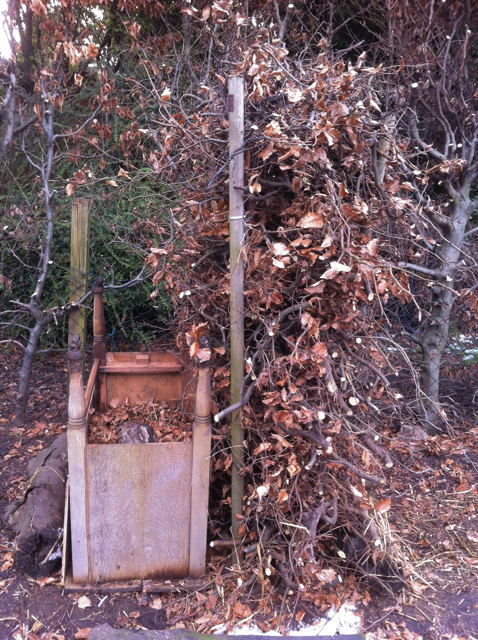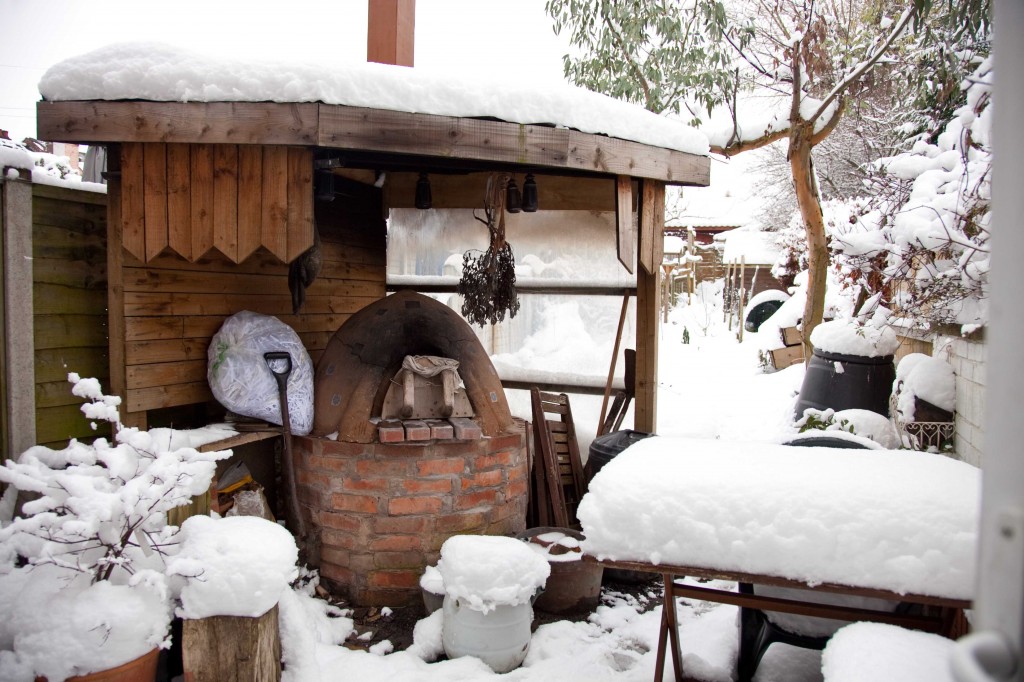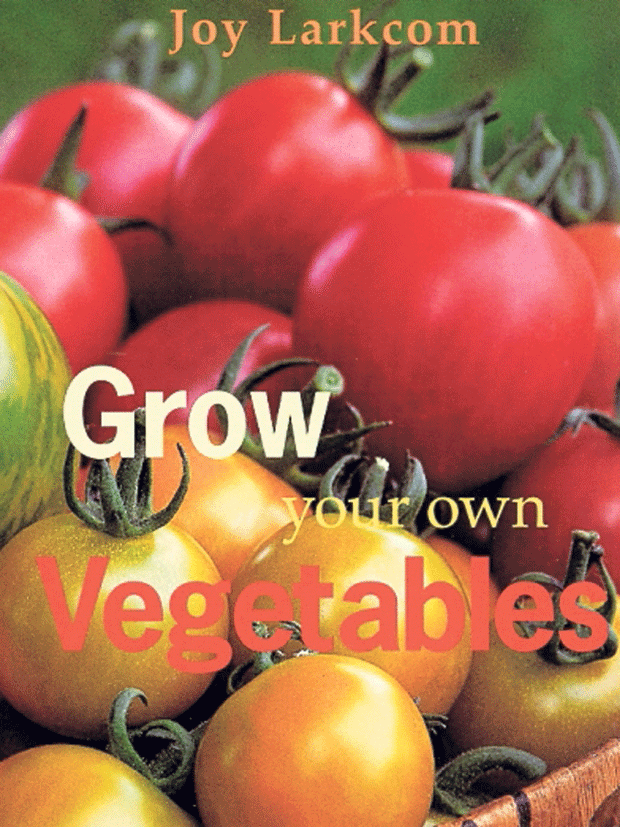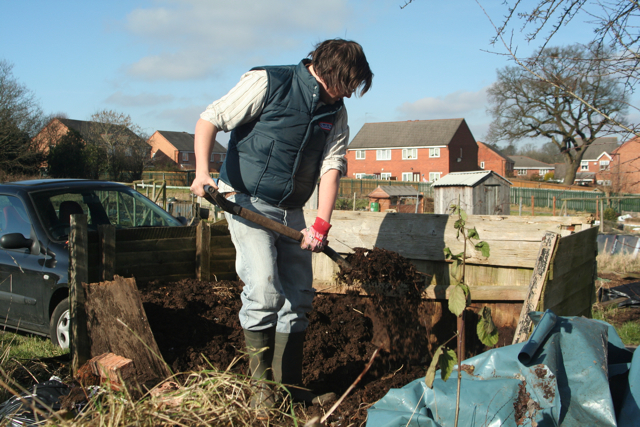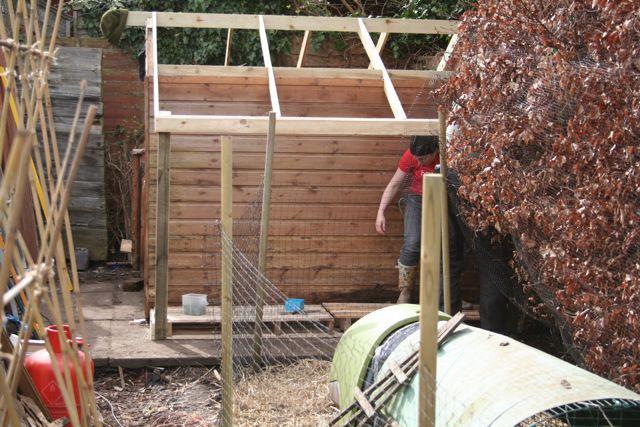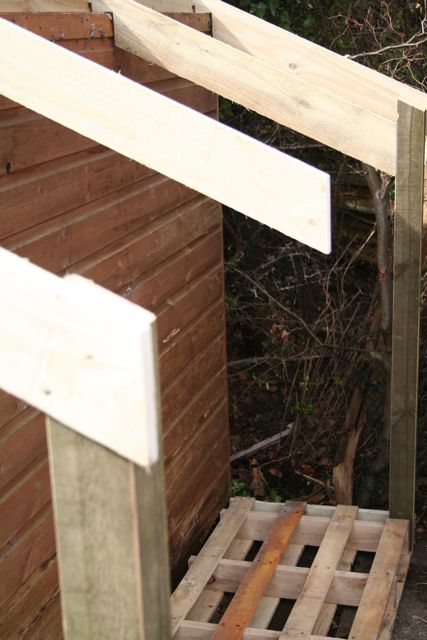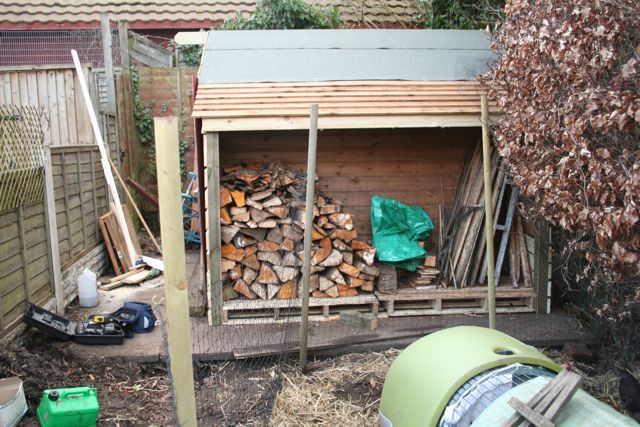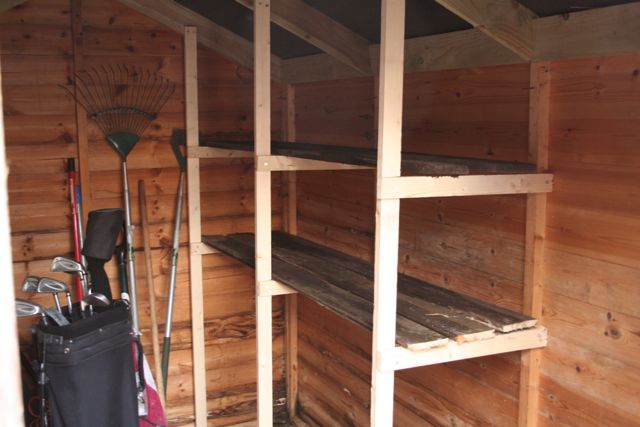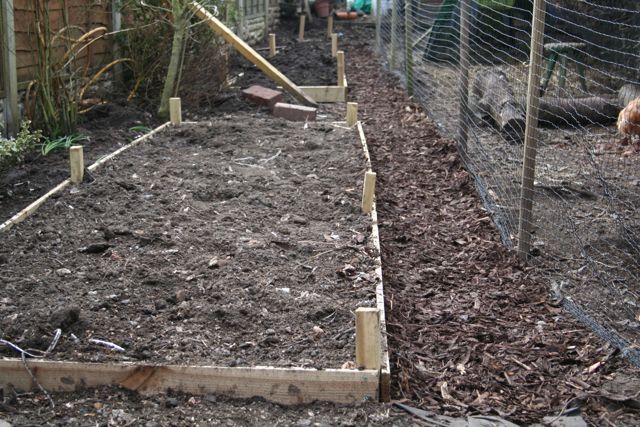Veg: Part 4 – vegetable growing diary
Read previous veg blog
It’s not every day you hear someone say that they’re pleased to have a surplus of cardboard boxes. Well we are. For now anyway.
This week Tom and I tried Lasagne gardening at our new allotment in Hazelwell Park. It’s an increasingly well-known method of no-dig gardening that originated in the USA, and is apparently great for reducing weeds. As the name suggests you lay down sheets of cardboard (the pasta) with layers of mulch in between (we’ve got dry grass, homemade compost and leaf mould) and water well. The idea is that instead of digging up all our couch grass and breaking our backs in the process we’ll suppress them and – fingers crossed – kill them, and at the same time add compost and nutrients as the layers rot down.
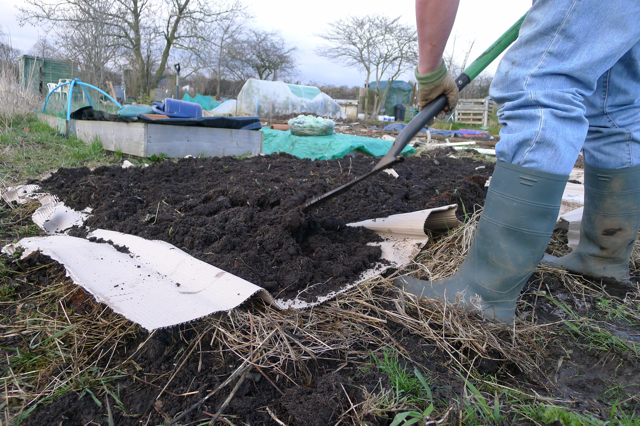
This way we can also avoid further compacting our clay heavy Stirchley soil, and breaking up the natural soil structure by digging into the subsoil. This could inhibit movement of water, air, minerals and biological activity, and we need all the help we can get to grow our veggies. According to Alys Fowler at Urban Veg more water is lost through evaporation than drainage so our mulching will definitely help with conserving water when we plant too.
Genius. Less work, and happier soil. And hopefully happier veggies too.
We’ve also discovered a patch of comfrey – great for making natural fertilizer, so we’re looking for a water drum to make a liquid solution in (1 part comfrey to 10 parts water). I’ve got my eye on nettles too and am hoping to learn to build a wormery. This is one area in which we have let our veggies down in previous years. Watering but rarely feeding. I’m told that new compost contains only has 6 – 8 weeks worth of food, so that’s why our vegetables have rarely grown big and strong in the past. They were hungry. Seems obvious now.
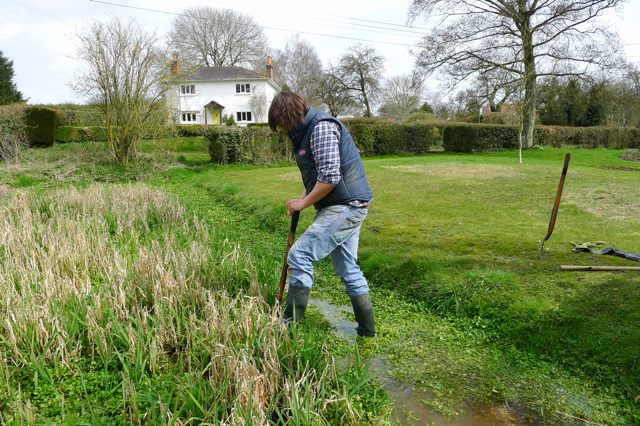
At the weekend we exchanged garden labour for great home-cooked food and veggie growing tips at Tom’s uncle and aunty’s house in Hampshire. They have a gorgeous old saddler’s cottage which they have rented for over 50 years. It comes with an amazing riverside garden with watercress bed, wooded area and huge veggie garden to die for. However, in even the most cared for garden, diseased soil (honey fungus) has started to kill a treasured old tree. That’s where we came in – to battle with and fell the old tree. We also came home with armfuls of watercress (today’s soup) after clearing their bed of encroaching reeds. A joy to weed on a sunny afternoon. Heaven.
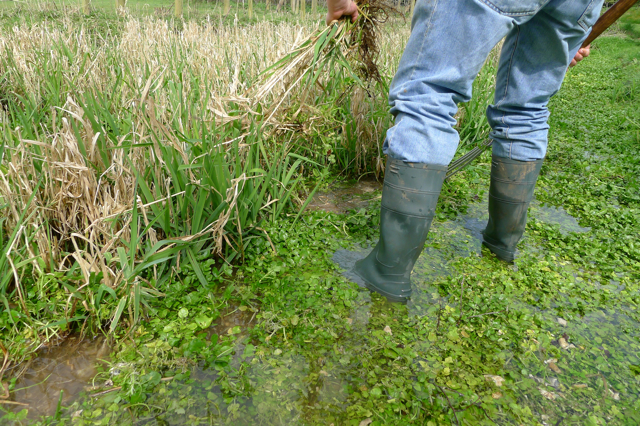
Whilst we’ve done nothing in our back garden this week, we’ve had a lot of fresh air in exchange for food growing knowledge and trial and error no-dig gardening. Last week at Urban Veg to come.
Read previous veg blog
